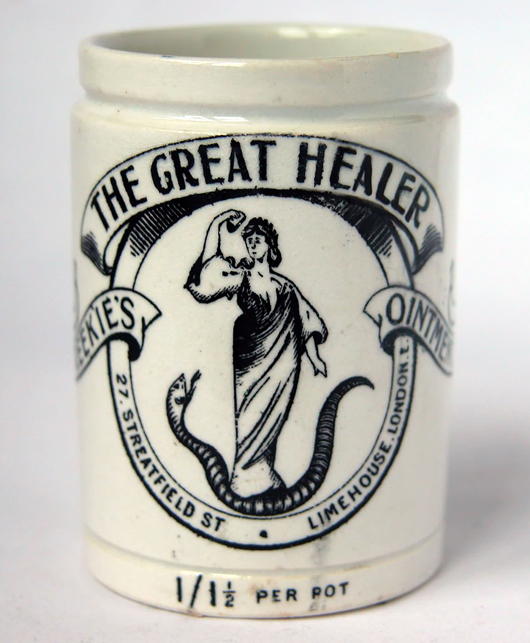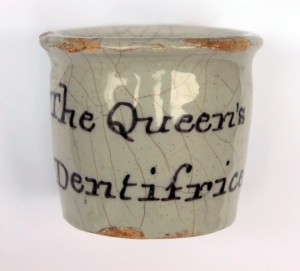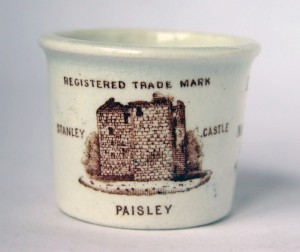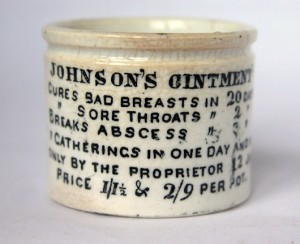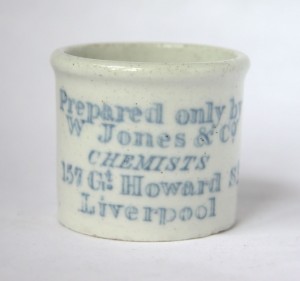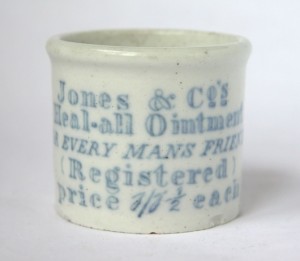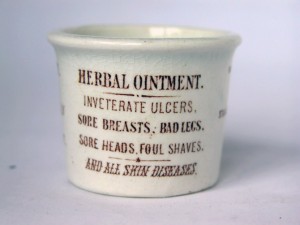LONDON – I’m told the best treatment for the morning after is toast and honey. I have no personal experience, you understand, but a few minutes spent perusing the extensive list of ailments that quack Victorian “chemists” claimed they could cure is the next best things.
If that doesn’t do the trick then a guide listing some of the prices the ceramic cure-all pots now command among today’s collectors probably will. It’s sobering reading, to say the least. After the previous column about collecting antique bottles, I thought the subject was the obvious follow-up, since they too can be unearthed in long-forgotten rubbish dumps.
When medical science was at a comparatively early stage in its development, many people still believed it was only the old cures, handed down through generations, that could provide remedies for their illnesses.
Drugs manufacturers offered what they believed at the time to be genuine cures. Others exploited the naive and poorly educated, offering instant, miraculous remedies containing nothing of purpose other than alcohol or narcotics.
As a result, ointment pots that date broadly to the Victorian and Edwardian period are highly collectable, not just because of their amusingly wild claims, but also their relatively small size and the significant variety make then ideal where space is limited.
The Victorian era saw the rapid development of an urban industrial economy with high concentrations of population in major cities and a subsequent rise in the transmission of diseases. The time was right for many to exploit working class ignorance.
The proliferation of cheaper mass-production methods, as well as increasingly sophisticated advertising, helped to support the growth of many new industries to serve and target this lucrative market.
Thomas Holloway, who started making ointments and pills in his mother’s kitchen using her pots and pans, was among the first to recognize the power and potential of advertising and spent large sums on worldwide campaigns.
He ended up a millionaire, funded gifts to the nation including a sanatorium and the Royal Holloway College in London and eventually sold his business to Beecham’s Pills. His medicines, however, were largely bogus.
In 1851, UK patent medicine firms had a combined turnover of some £250,000 that grew spectacularly throughout the remainder of the century.
In 1884, according to the Chemist and Druggist magazine, there were between 800 and 1,000 makers of patent remedies in Great Britain, producing up to 5,000 different medicines, with some 19,000 people were employed by the industry in manufacture and distribution.
Many ointments were based on old remedies or at least attempted to engender the feeling that a successful recipe had been passed down through the generations. Brand names such as Mother Ashton, Mrs Croft, Mrs Hulse and Mrs Gares were used to personalise and reinforce the belief that each generation had a secret herbal recipe that could cure all ills.
With no restrictions on the medical properties of ointments and cures, together with the ease of manufacture of transfer printed pots on which the claims could be stated, the growth of the quack cure exploded.
This is reflected in the vast range of occupations among people selling the medicines, and nor was it limited to chemists or druggists. Bicycle manufacturers, drapers, newsagents and even a schoolmaster are now known to have sold ointments and salves over this relatively short period.
Trade directories are full of examples from proprietors such as William Spencer, who ran the Butchers Arms in Lydiard Millicent, in Swindon, in 1889 and also advertised “Spencer’s ointment for burns, scalds & every description of sores & skin disease.” Another, Mrs Sarah Ann Andrew, is listed in 1879 as a salve and ointment maker, but also a coal merchant at 64 Broad Lane, Sheffield.
A growing number of potteries helped to support this potentially lucrative industry and ensured that high quality mass-produced containers were available to all. Potteries were located throughout the UK and many produced ointment pots.
The demolition of the Maling Pottery buildings at Newcastle-Upon-Tyne uncovered examples of many of the items produced by this significant supplier, including, not surprisingly, ointment pots for the local business of George Handyside.
Entrepreneurial George sold a “medicinal cure” for nerves, digestion, rheumatism, toothache and a blood purifier. An elixir which he claimed cured alcoholism soon became a renowned product sold nationally, while his book Every Man Should Be His Own Doctor sold over a million copies.
Similarly, when Buchan’s Portobello Pottery buildings in Edinburgh were demolished in the early 1970s, hundreds of Singleton’s Golden Eye Ointment pots were discovered.
Port Dundas, based in Glasgow, was another leading Scottish pottery that advertised its production of ointment pots as well as virtually every type of stoneware container imaginable.
Although there was initially no legislation to control the claims made by manufacturers about the powers of healing, all medicines in the UK were subject to tax. A government duty of 1d was levied on all ointments retailing at 1/- (five pence) hence the vast majority of them sold for 1/1½d.
As medicine advanced, so the medical profession began to understand how damaging many of the false claims were affecting the profession as a whole. Most ointments contained little in the way of healing ingredients and many could also have done more harm than good.
The main constituent for most ointments was hog lard or beef fat as well as beeswax and petroleum jelly, which were used as a carrier for herbs or a range of active chemical-based ingredients.
The analysis of one of the most popular Victorian ointments, Dr. Robert’s original Poor Man’s Friend ointment, showed that it consisted chiefly of paraffin molle – soft, white paraffin – while Brown’s Herbal Ointment was essentially just petroleum jelly.
Significant advances were made in medicine toward the end of the 19th century. These were both scientific and also, importantly, in the regulation of medicines, principally by the British Medical Association (BMA) which began to take a leading role in influencing legislation on public health matters.
The exposure of quack medicine with the BMA campaign in 1909 resulted in many proprietors moderating the often-exaggerated claims once attributed to their cures, while increased scrutiny ultimately caused the demise of many patent medicines and several proprietors were actually prosecuted for fraudulent statements.
World War I was a watershed for many manufactured products, with cheaper forms of packaging, such as tins, quickly replacing pottery containers. A few companies continued to use traditional style ointment pots into the 1920s, but further efficiency improvements in glass, labels and collapsible metal tubes ended their use by the 1930s.
Incredibly, it was not until the 1941 Pharmacy and Medicines Act that manufacturers were required to disclose the active ingredients on a product’s label.
The images for this column were supplied by Bob Houghton, co-author with Mark Priestley of the definitive Historical Guide to Delftware and Victorian Ointment Pots.
By sifting through library archives, old Kelly’s and Post Office trade directories, and with help from the Royal Pharmaceutical Society, the Welcome Institute and the Science Museum, the two were able date pots and when their makers were active. No one has ever done this before.



